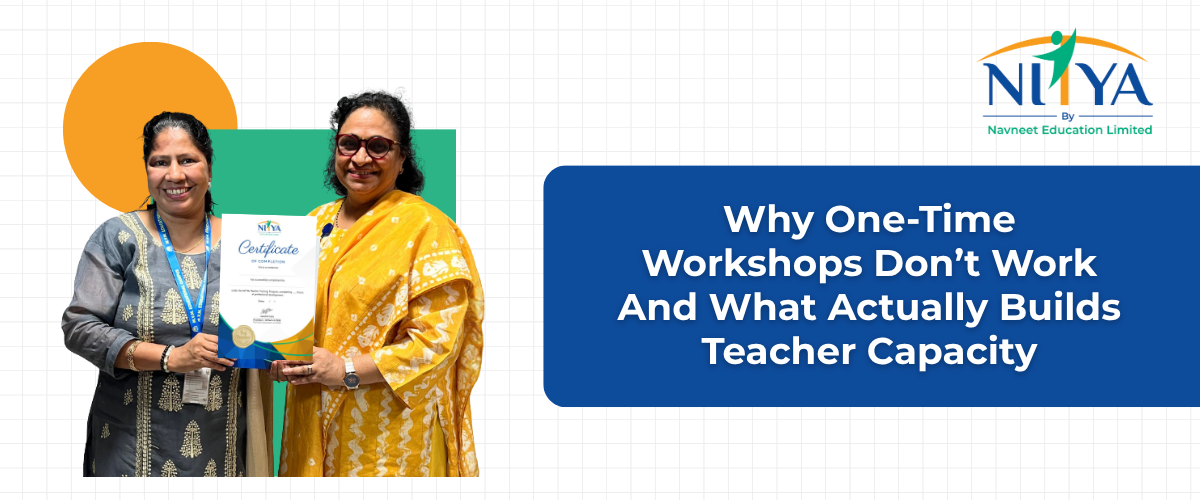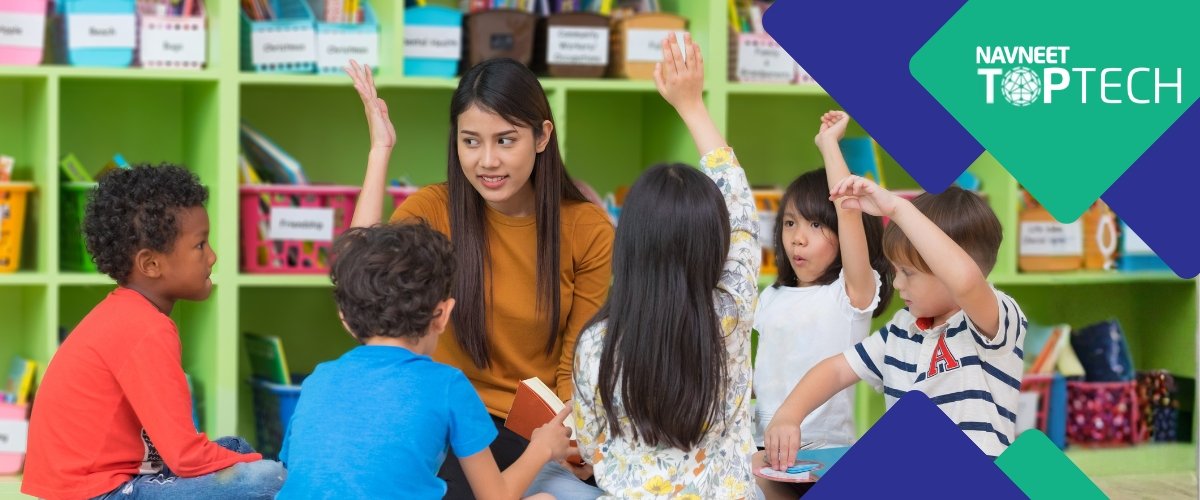Introduction
As digital education becomes the norm, teachers need to stay ahead with new-age skills and teaching methods. This guide shares the top strategies to upskill teachers for digital education effectively for the modern digital classroom.
The purpose of this blog post is twofold: first, we will define what it means for teachers to be “upskilled” for the digital era; second, we will outline five best practices that can help you achieve this goal for your own staff members.
Why is it important to upskill teachers for digital education?
It is crucial to upskill teachers for digital education to ensure effective student engagement, tech-based classroom management, and delivery of interactive lessons. Teachers must develop strong proficiency in essential digital tools such as Learning Management Systems (LMS), virtual classrooms, and content creation platforms to deliver effective online instruction. Upskilling also helps educators adapt to diverse learning needs, personalize instruction, and maintain relevance in today’s fast-evolving educational landscape.
How can schools support digital learning for teachers?
Schools play a vital role in fostering digital learning by providing ongoing training, access to cutting-edge technology, and a supportive environment that encourages innovative teaching practices, providing access to digital tools and resources, and creating a culture that encourages experimentation with EdTech platforms. Regular training sessions, peer-to-peer learning opportunities, and access to online certification courses can ensure that teachers stay updated with the latest digital teaching strategies.
What challenges do teachers face when transitioning to digital education?
Transitioning to digital education can be overwhelming for many teachers due to several challenges. A major hurdle is the lack of proper training and technical know-how, making it difficult to effectively use digital tools and platforms. Many educators also face issues with limited access to resources or stable internet connectivity, especially in underfunded schools or remote areas. Another key challenge is adapting traditional teaching methods to fit online formats while still maintaining student engagement. Additionally, the increased screen time and digital fatigue can affect both teachers and students. Lastly, some teachers may encounter resistance to change, struggling to adopt new technologies due to fear of failure or lack of confidence.
Upskilling teachers involves more than just learning new tools — it requires a mindset shift and practical strategies to integrate technology meaningfully in the classroom. Here are five best practices that can guide your school’s efforts to empower teachers in the digital era.

5 Best Practices to Upskill Teachers for Digital Education
1. Establish a Clear Learning Goal
Establish a clear learning goal for your students. Define the desired outcome, create a plan for reaching the goal, and determine the resources needed. This is not an easy task, but it must be done if you want to be successful at upskilling your teachers. The first step in this process is identifying exactly what it is that you want your students to learn. It may sound obvious, but “learning” can mean many different things depending on who you ask: do they need more knowledge? More skills? More confidence? Once you’ve identified what kind of learning will benefit them the most (and why), then comes figuring out how best to achieve those outcomes through instruction and assessment strategies that suit both their needs as well as yours as an educator.
2. Leverage Technology to Enhance Learning
Technology can be used to enhance learning in many ways, from integrating digital tools into the curriculum to creating engaging lessons that incorporate technology. Teachers should also emphasize digital safety by teaching students how to use technology responsibly and safely.
3. Focus on Inclusive Education
Inclusive education is the practice of creating an environment in which all students can learn and thrive. This includes identifying and addressing learning barriers, providing personalized learning, and ensuring that all students have access to technology. Teachers need to understand how technology can be used as a tool for inclusive education. For example:
Personalized learning: Teachers can use digital tools such as Duolingo, TopSocrer, or TopSchool to provide personalized instruction that meets individual needs. Students who struggle with reading comprehension may benefit from watching videos instead of reading text on paper; those who are struggling with math could benefit from working through problems on their own using online software like Desmos (which allows users to enter equations into graphs).
Learning barriers: If you’re teaching English as a second language (ESL), then it’s likely that many of your students will need extra help learning English vocabulary words or grammar rules before they begin working on other subjects like history or science; this is where websites like Quizlet come in handy! Students can use these sites as study aids during class time so they don’t fall behind their peers due to a lack of knowledge about basic concepts.”
4. Develop Collaborative Learning Opportunities
In the digital age, collaboration is an essential skill for teachers to develop in their students. One way to encourage this type of learning is by using technology that facilitates collaboration between students and teachers, as well as between students themselves. For example, Google Classroom allows you to create assignments that can be shared with your entire class or just specific groups within it, and it also allows you to set up group chats so that everyone can work together on those assignments (or just talk about whatever). You could also use tools like Slack or Trello for similar purposes—Slack has been used successfully by many teachers who want their students’ projects organized into different channels so they can easily see what each person is working on at any given time; Trello offers boards where users can post tasks related to specific projects/assignments (for example: “Research Topic A” or “Create Presentation B”).
5. Incorporate Professional Development
Professional development is an important part of any teacher’s career, but it can be difficult to find the time and resources for classes. One way to make professional development accessible is by providing regular sessions on your campus. If you’re short on staff members who are trained in technology, consider outsourcing some of your training needs through online courses or webinars (for example, Google offers free online courses). Your teachers should also have access to other teachers who are willing to share their expertise; this will help them develop skills that aren’t necessarily taught in school settings but will benefit students nonetheless. Encourage your staff members’ participation in professional organizations so they can connect with others who share their passion for education technology!
How often should teachers attend digital training programs?
To keep pace with the rapid evolution of technology and teaching methods, it’s important for teachers to regularly participate in teacher training programs. Ideally, attending these sessions every 3 to 6 months helps educators stay current with new tools, improve their digital skills, and continuously enhance their ability to engage students effectively in a tech-driven classroom environment. Regular training also supports ongoing professional growth and confidence in using digital platforms.
Conclusion
In conclusion, there is no doubt that the digital era has changed the way we teach and learn. Teachers need to be upskilled to keep up with these changes. However, they must be given ongoing professional development so that they can continue learning new skills as well as applying old ones in new ways. The five best practices listed above are just some of the ways you can help your teachers become more effective in their classrooms by providing them with valuable resources, such as online courses or workshops on specific topics related to teaching methods and technology use in educational settings.




